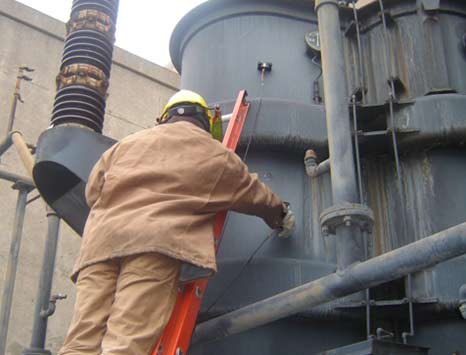Transformer Inspection using Acoustic Emission
Acoustic emission (AE) is a nondestructive testing technology that may be used to detect and locate partial discharges (PD) in oil-immersed power transformers and reactors. The technology may be applied to factory and field transformers. AE testing is commonly used after PD has been detected by another diagnostic procedure such as dissolved gas analysis or electrical measurement.
AE testing may be used to detect and locate PD from:.
- – The outside of the winding
- – Between the core and the tank,
- – Arcing/tracking of the oil surface
- – Arcing/tracking of the bushing surface in the oil
- – The de-energized tap changer
- – The on-load tap changer.
PD detection from within the winding, and in between the winding and core, is difficult due to acoustic emission attenuation.

TISEC uses the guidelines set forth in IEEE Standard C57.127-2007 “Guide for the Detection and Location of Acoustic Emissions from Partial Discharges in Oil-Immersed Power Transformers and Reactors for all inspections”.
Partial discharges in oil-immersed transformers emit acoustic energy that may be detected using sensors mounted on the tanks outside wall. Acoustic emission from partial discharges are analyzed according to their intensity or amplitude, rise time and counts. Intense partial discharges from the outside of the winding, for instance, emit high amplitude PDs. PDs from within the winding are generally low amplitude and difficult to detect.
Other parameters including load current, pump current, temperature, and load tap changer motor current may be acquired and correlated with AE data to identify the operating conditions that cause PD.




